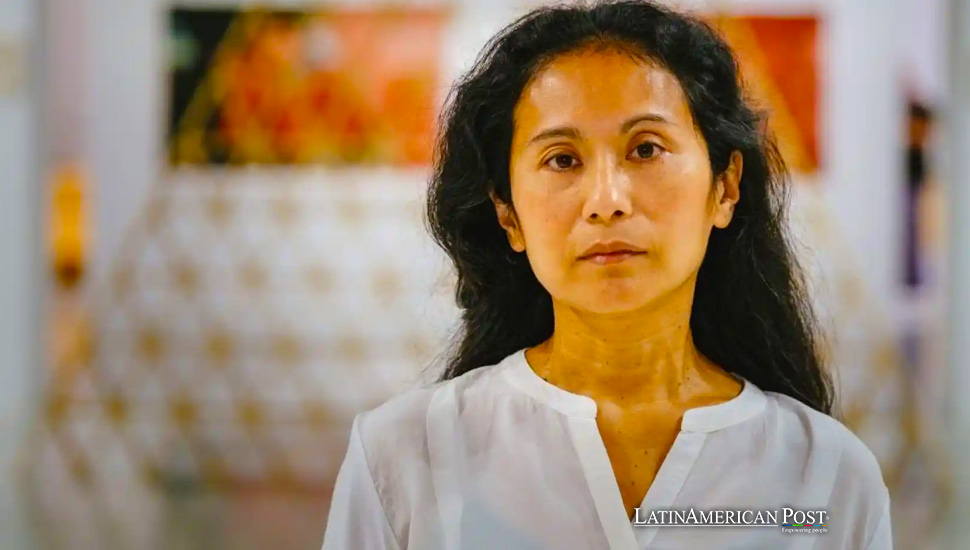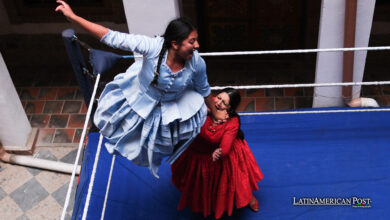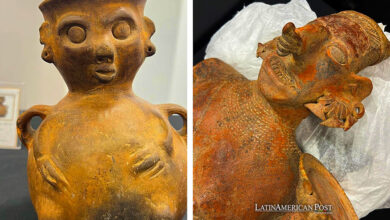Decolonizing Museums is Peruvian Artist Sandra Gamarra’s Vision at the Venice Biennale

Peruvian artist Sandra Gamarra challenges colonial narratives at the Spanish Pavilion in Venice, proposing a new perspective on historical art collections.
Breaking Barriers: Sandra Gamarra Heshiki Takes the Lead
In a groundbreaking move that signifies a pivotal shift in the art world’s engagement with colonial legacies, Sandra Gamarra Heshiki becomes the first artist not born in Spain to curate the Spanish Pavilion at the Venice Biennale. Her project, “Pinacoteca Migrante,” is a bold exploration of Spain’s colonial past, offering a fresh perspective on the artworks housed in national museums. This initiative marks a significant moment in Gamarra’s career and symbolizes the maturing perspective of Spanish society toward its historical narrative.
Born in Lima, Peru, in 1972, Gamarra’s journey into the heart of Spain’s artistic heritage was not just a geographical move but a deep dive into the complex layers of cultural hierarchies ingrained in Western art education and museum collections. Her project in Venice, curated by Agustín Pérez Rubio, underscores a growing trend in the international art scene towards decolonization. This movement seeks to reassess and recontextualize the narratives perpetuated by institutions that have historically been Eurocentric in their outlook.
“Piacoteca Migrante” is a testament to Gamarra’s innovative approach to art, where she reinterprets, replicates, and reimagines existing works from Spanish museums, creating a dialogue that challenges the colonial gaze. By selecting pieces such as Frans Hals’ “Grupo familiar ante un paisaje” from the Museo Thyssen Bornemisza and Francisco de Zurbarán’s “Bodegón con cacharros” from the Museo del Prado, Gamarra brings to light the often overlooked elements that speak volumes about the colonial era—such as the presence of an enslaved person in Hals’ painting and a Mexican búcaro (pot) in Zurbarán’s still life.
Peeling Away Layers of History
Gamarra’s work is a deliberate effort to peel away the layers of history told from a singular perspective, encouraging a more inclusive understanding of the past. “This museum, more than showing, removes the blindfold,” explains Pérez Rubio, highlighting the project’s intent to reconsider how history is presented and perceived in museum spaces.
The Spanish Pavilion, under Gamarra’s vision, is organized into five thematic rooms culminating in a “Migrant Garden,” each space dedicated to a specific pictorial genre such as portrait, landscape, and still life. Titles like “Virgin Land,” “Cabinet of Extinction,” “Cabinet of Enlightened Racism,” “Mestizo Masks,” and “Altarpiece of Dying Nature” suggest a narrative that is both a critique and a reimagining of historical representations. Gamarra aims to use these installations as a lens through which viewers can examine other collections, fostering a critical engagement with art’s role in shaping our understanding of history and culture.
Gamarra’s interest in the colonial narrative was sparked upon her arrival in Spain 15 years ago, when a visit to the Museum of Anthropology in Madrid revealed a compartmentalized presentation of global cultures, conspicuously omitting European history. This observation propelled her to explore Spanish museum collections for traces of colonial influence, a journey culminating in the “Pinacoteca Migrante.”
Her project arrives at a time when Spain itself is grappling with its colonial legacy. Recent announcements by the Spanish Minister of Culture, Ernest Urtasun, regarding a revision of the country’s museum collections to address colonial narratives and the selection of Adriano Pedrosa as the curator of the Biennale, who is known for his inclusive approach to museum exhibitions in São Paulo, underscore a broader shift towards acknowledging and rectifying historical biases.
Art as a Catalyst for Debate
The reception of Gamarra’s previous exhibitions, particularly her “Good Government” show in Madrid, which invoked terms like “racism” and “restitution,” points to the potential for “Pinacoteca Migrante” to spark debate and dialogue. Gamarra welcomes this, seeing art as a safe space for active discussion and reflection on pressing and complex issues.
With a budget of 400,000 euros, supported by the Spanish Agency for International Development Cooperation and Acción Cultural Española, “Pinacoteca Migrante” represents not just a financial investment but a commitment to fostering a more nuanced understanding of art’s role in society. Through her work, Gamarra challenges viewers to confront the colonial past and reconsider the narratives that have shaped their knowledge of history and culture.
Also read: Preserving Heritage: Exploring Mexico’s Rich Tzotzil Tradition at Carnaval K’intajimol
As the Venice Biennale prepares to host this ambitious project, the art world watches closely, anticipating the impact of Gamarra’s “Pinacoteca Migrante” on the ongoing discourse around decolonization and the representation of history in art. Through her visionary approach, Gamarra not only redefines the boundaries of artistic expression but also invites a global audience to engage with history in a manner that is both critical and transformative.





